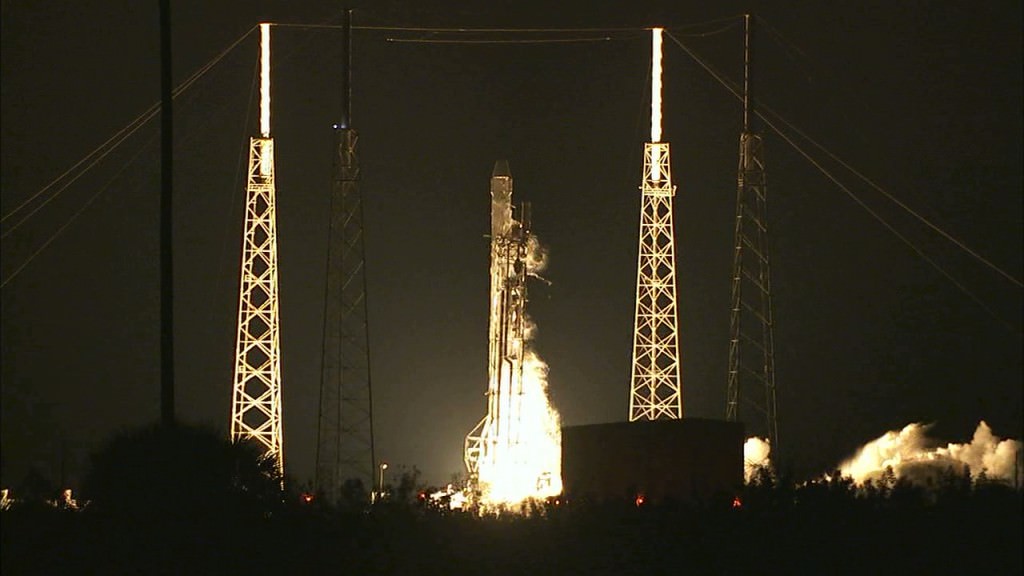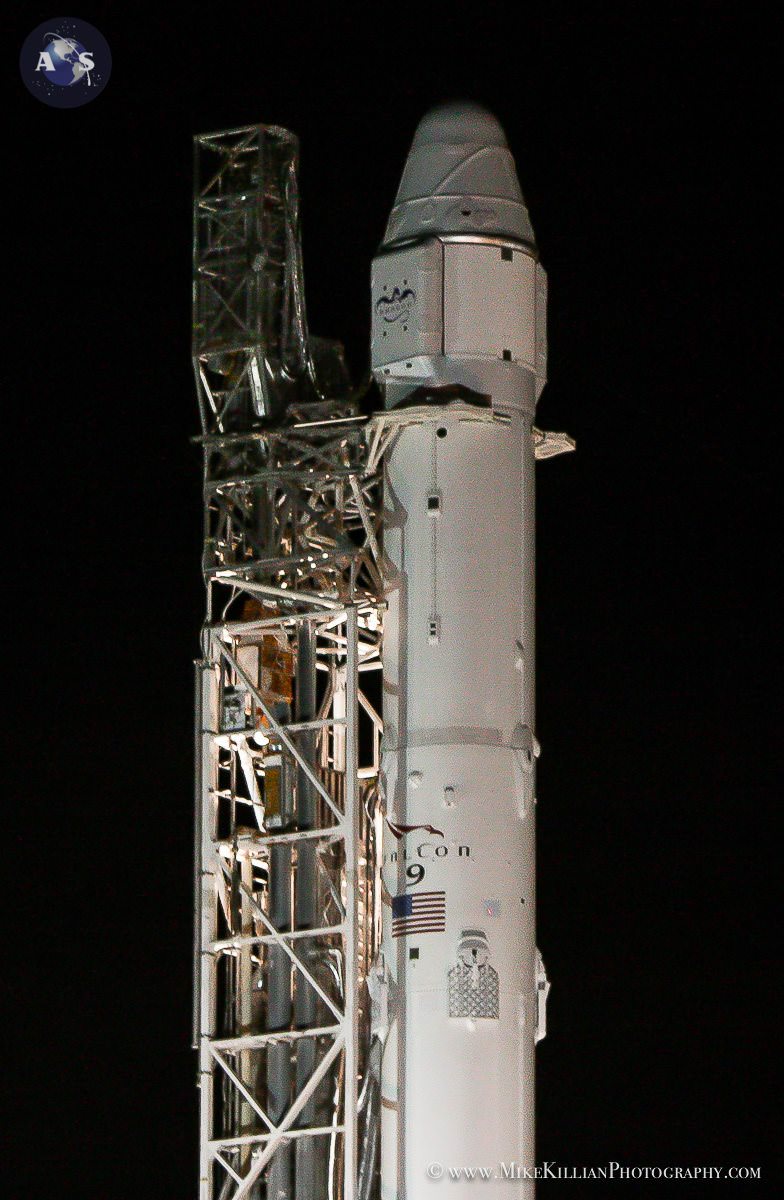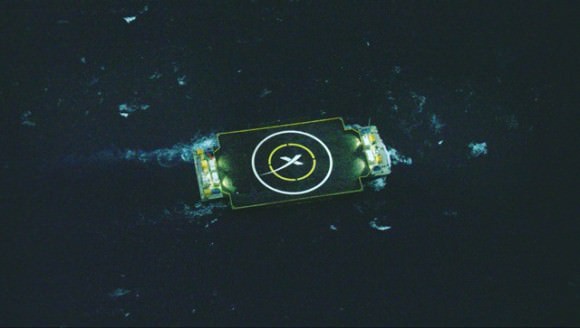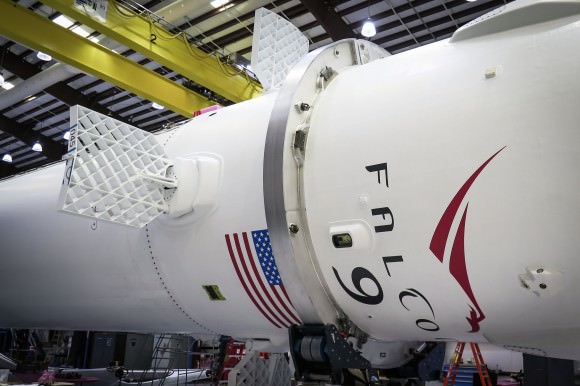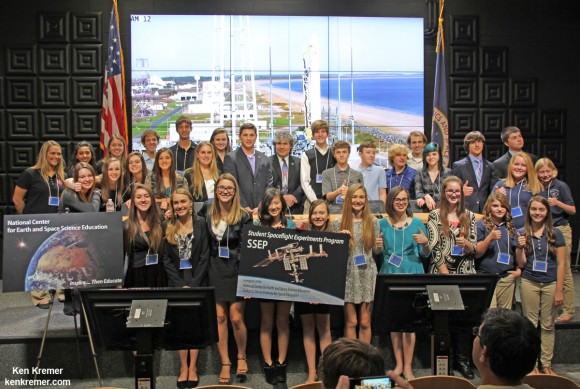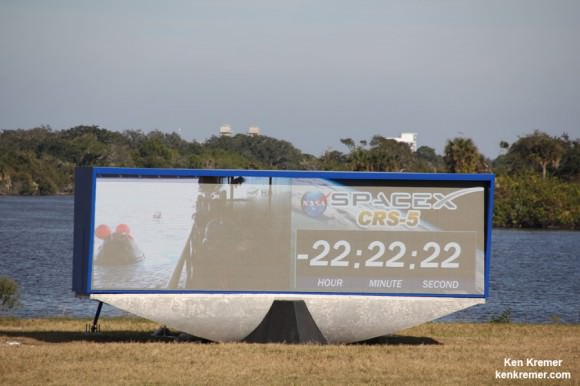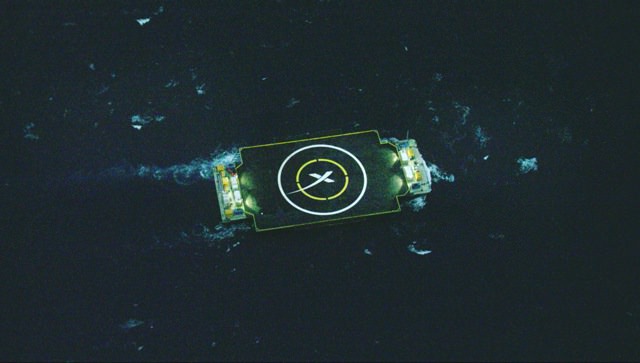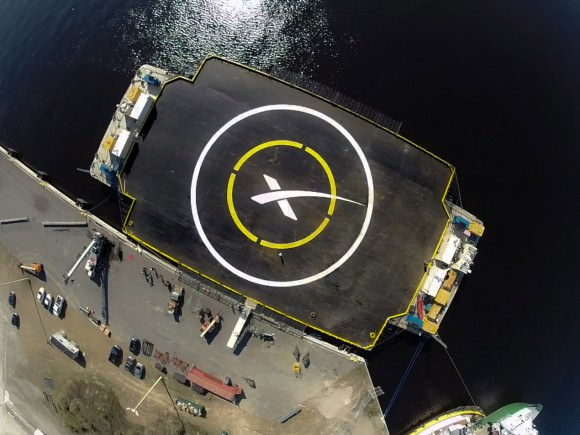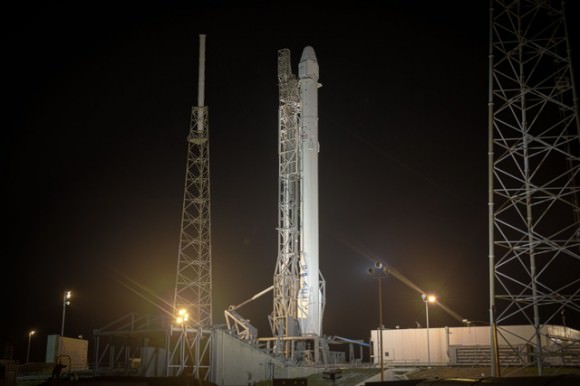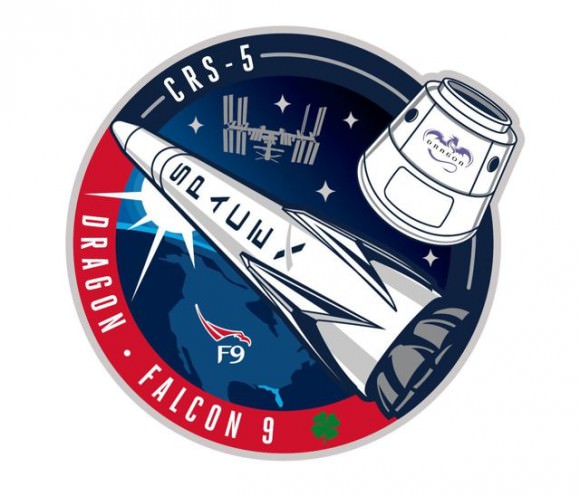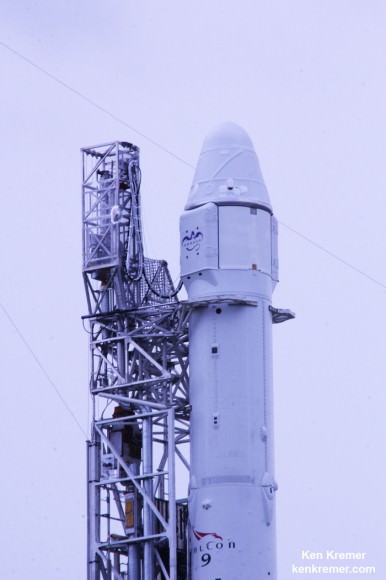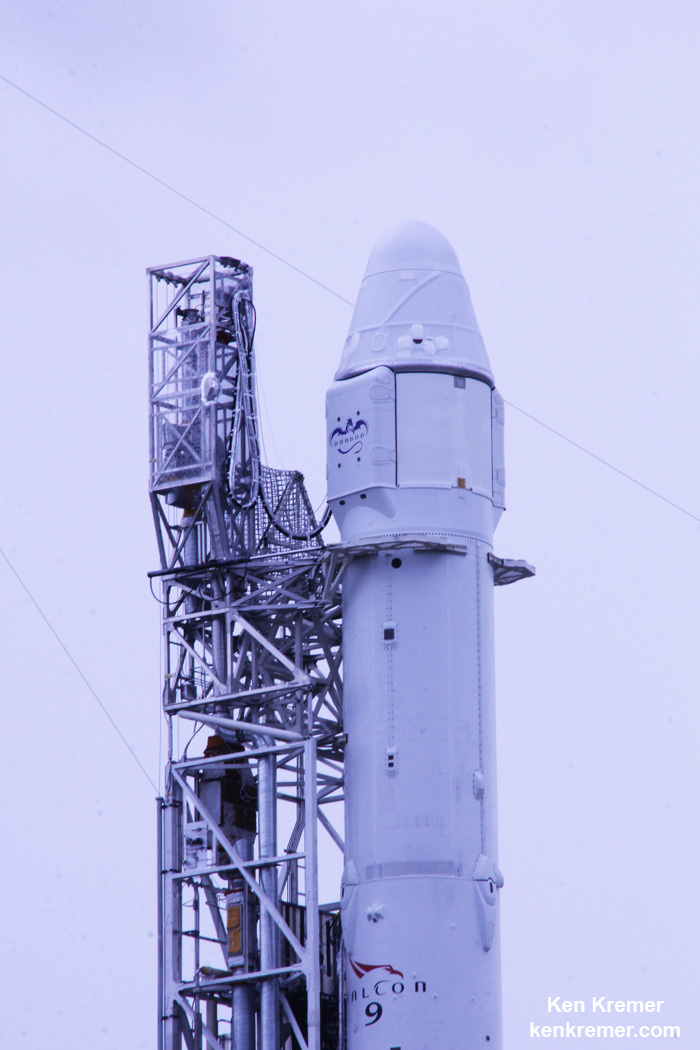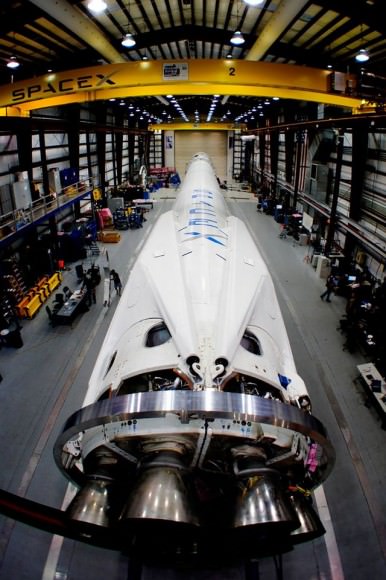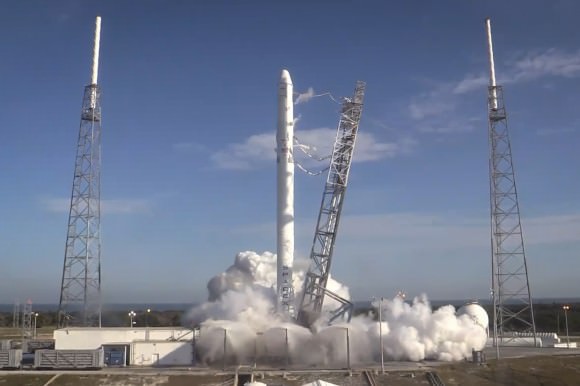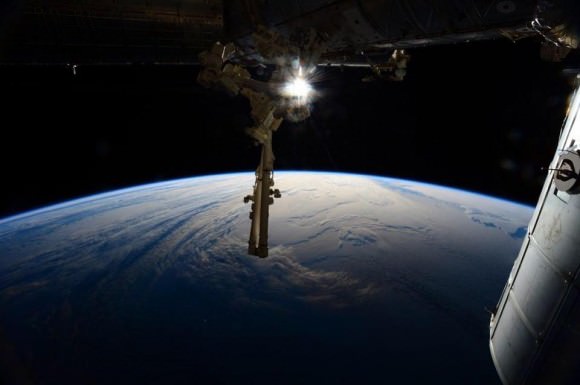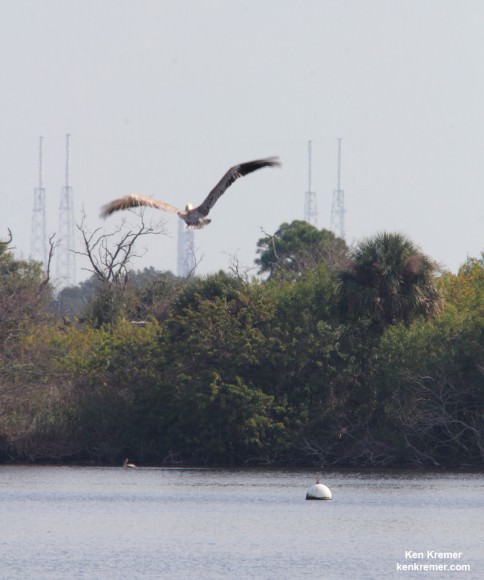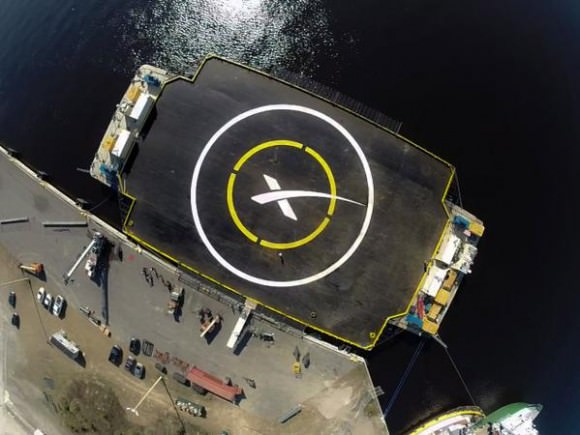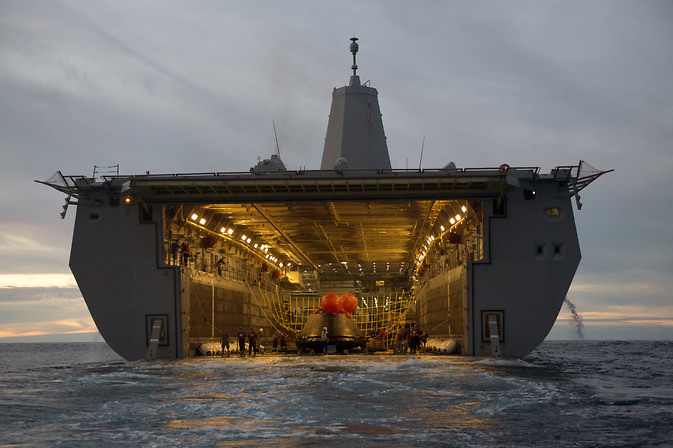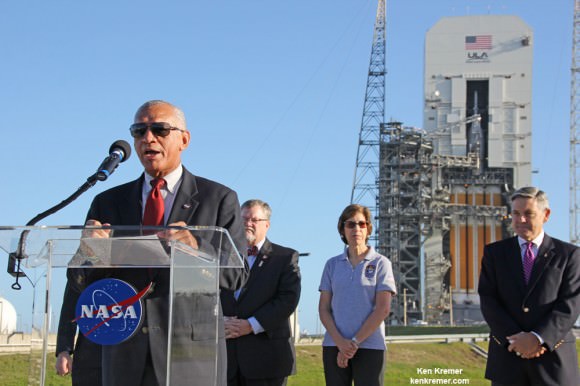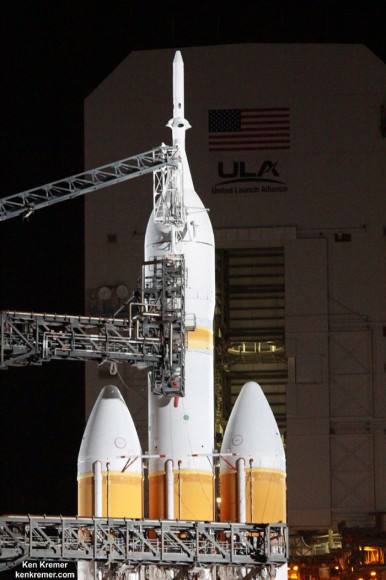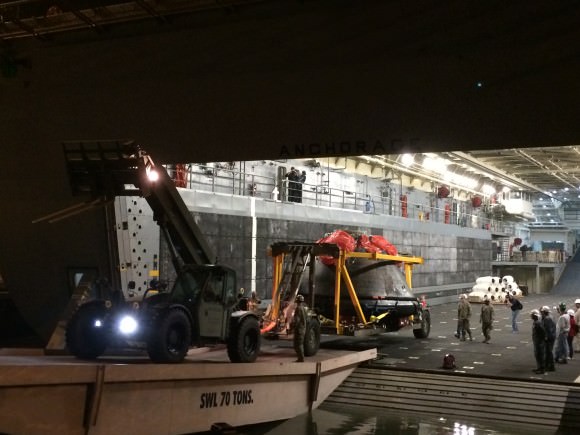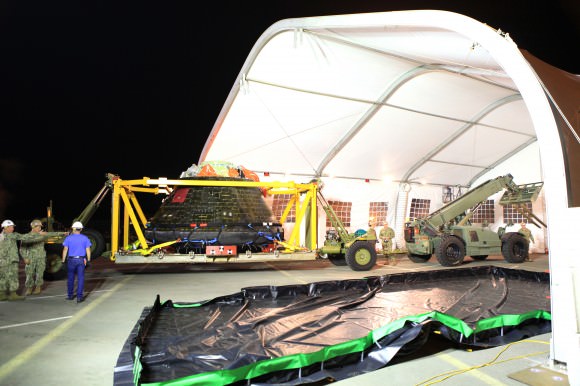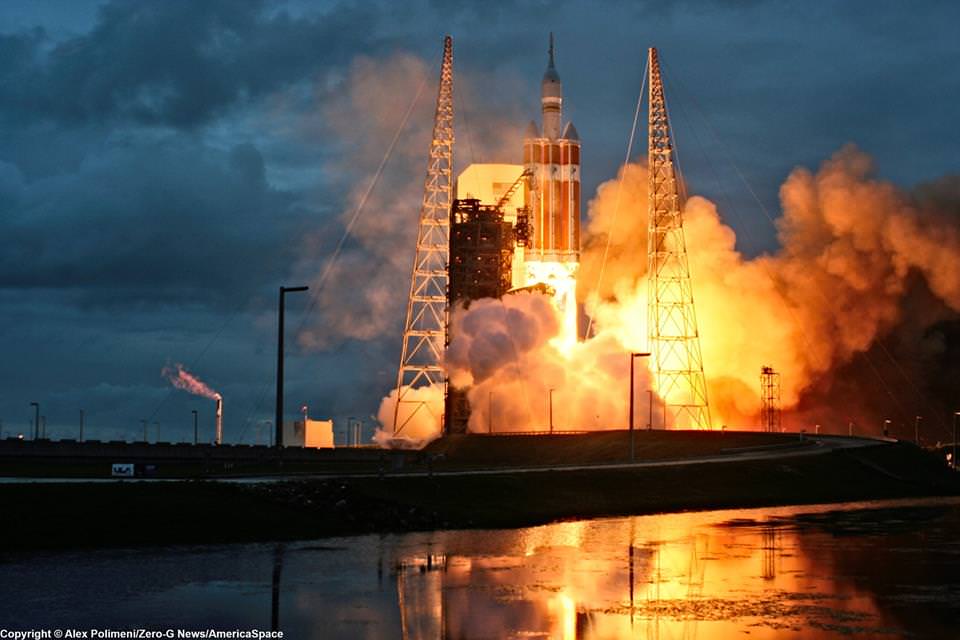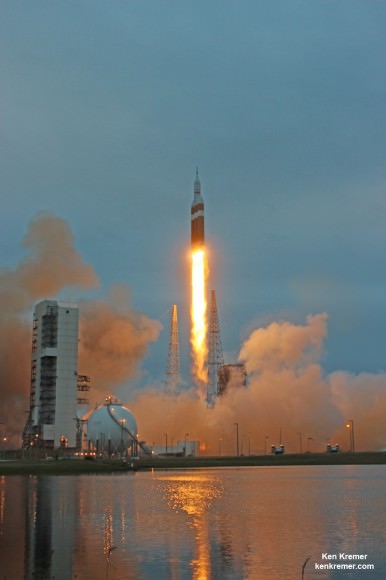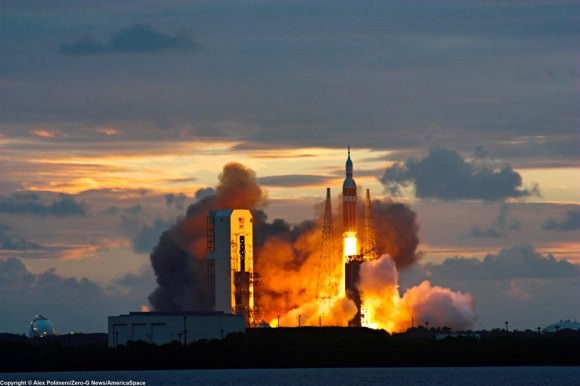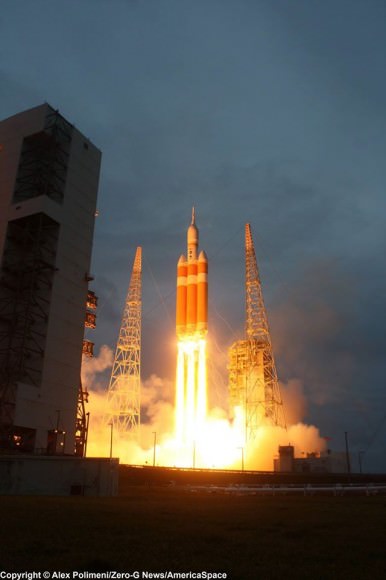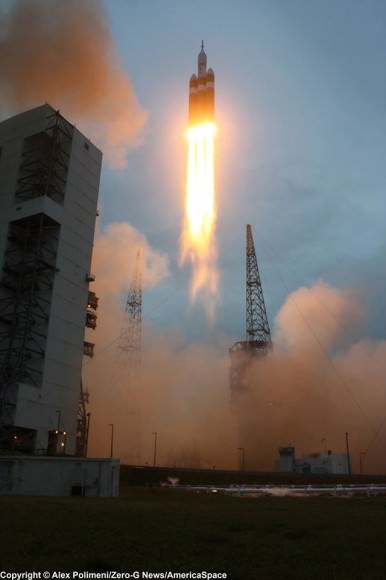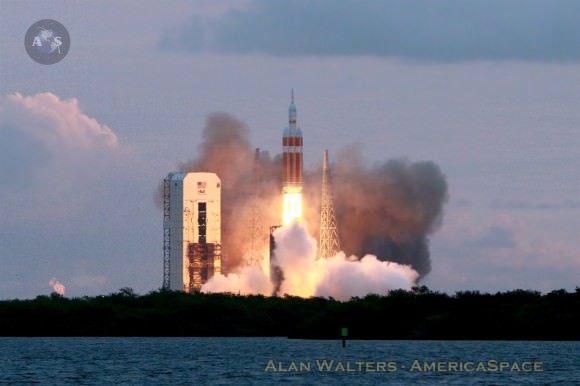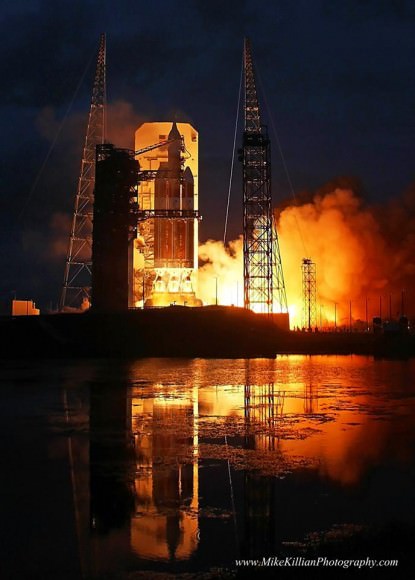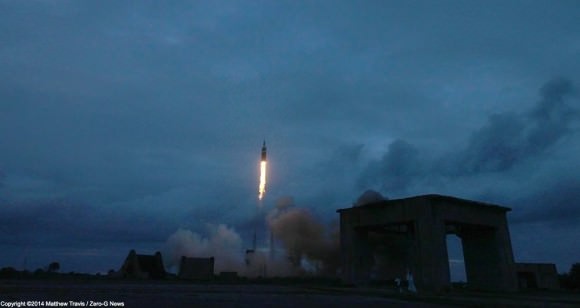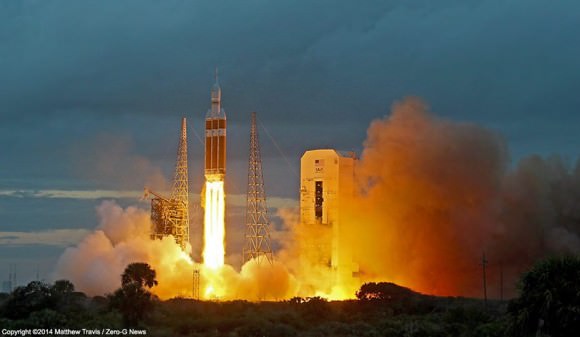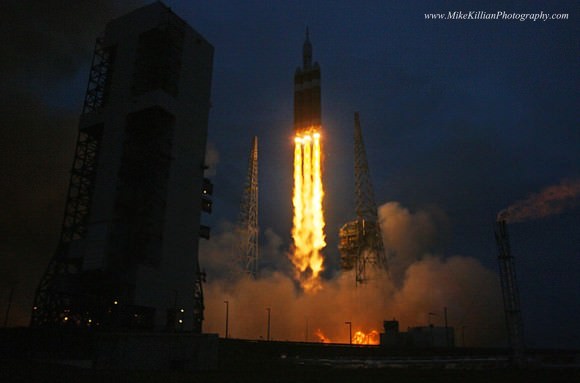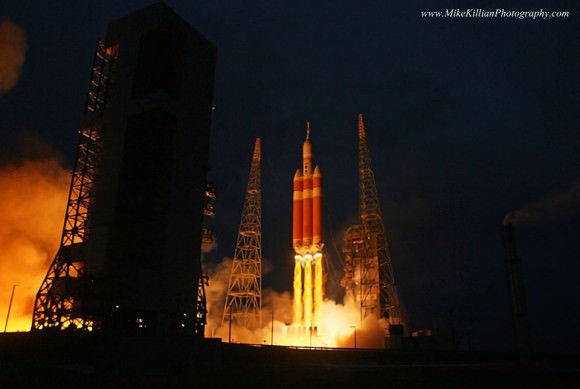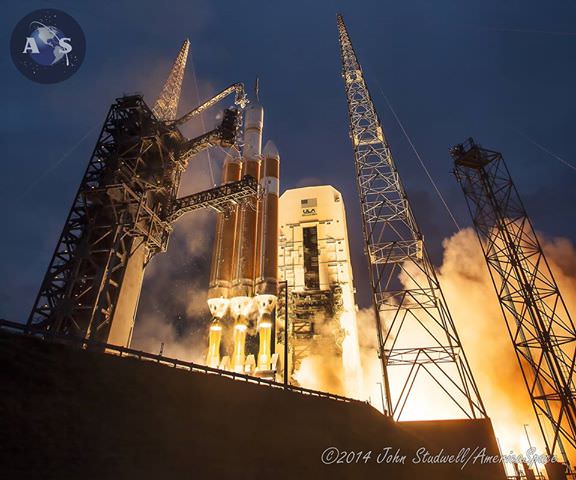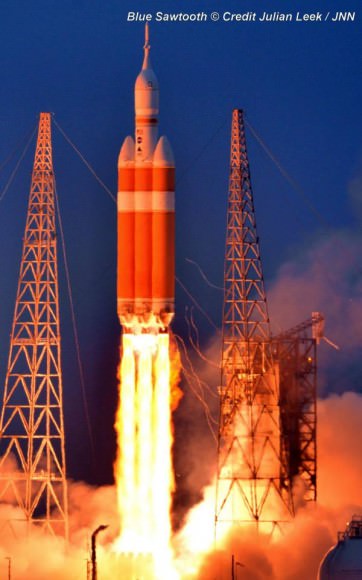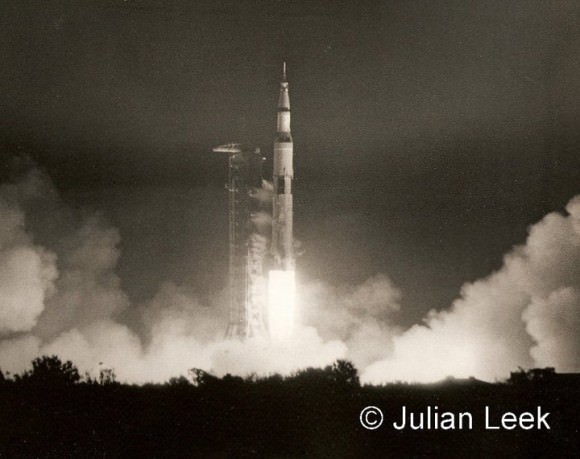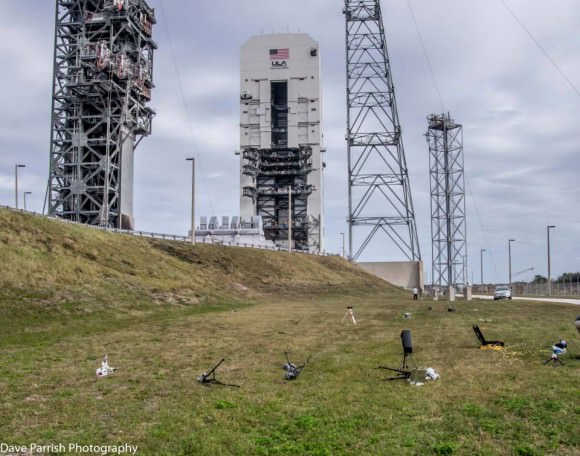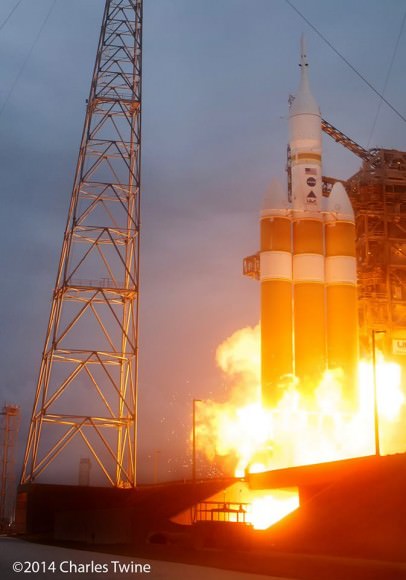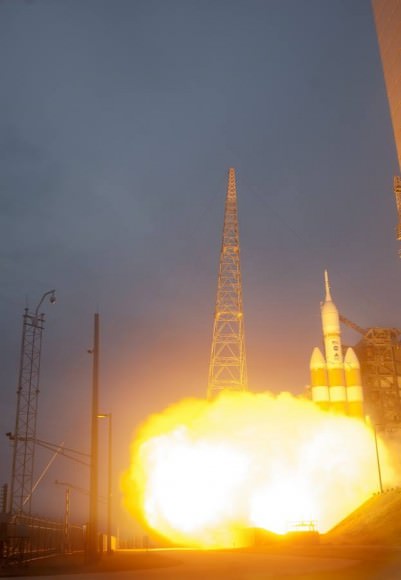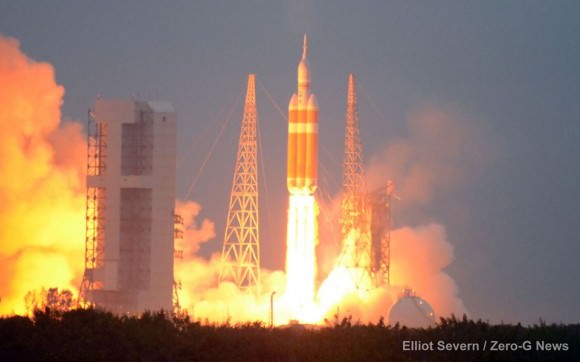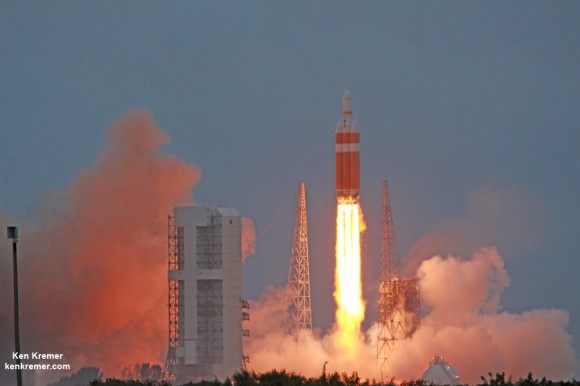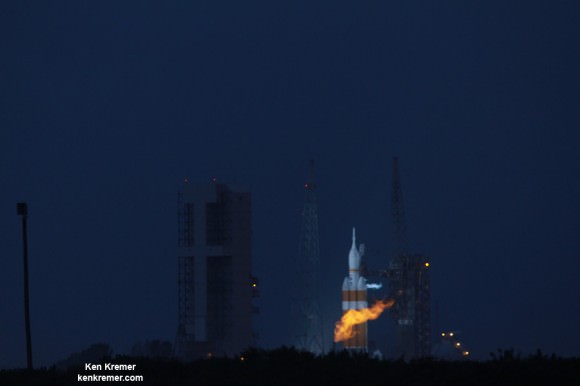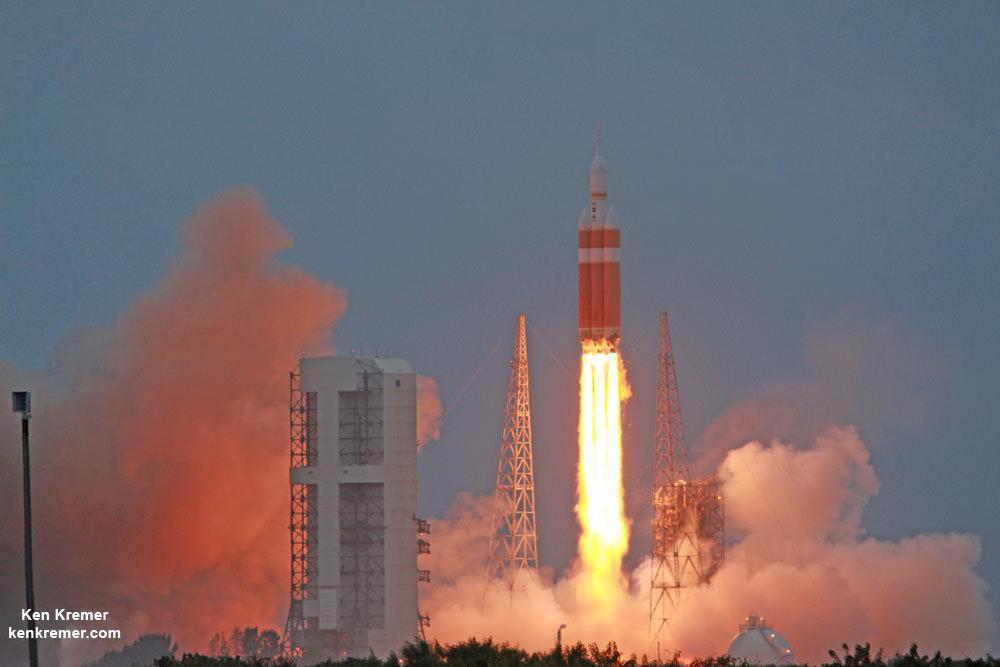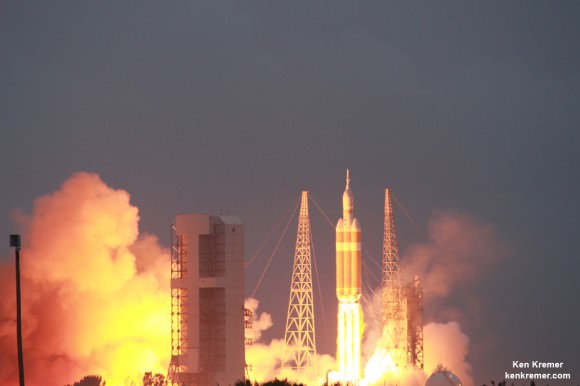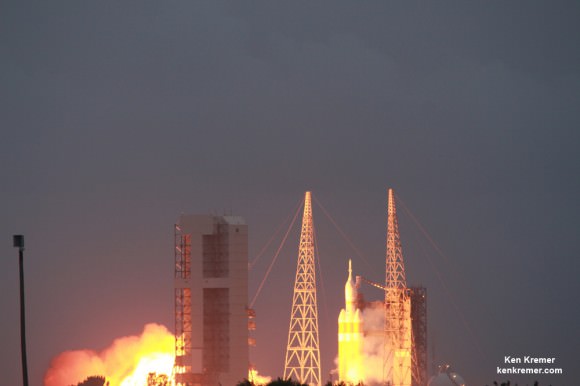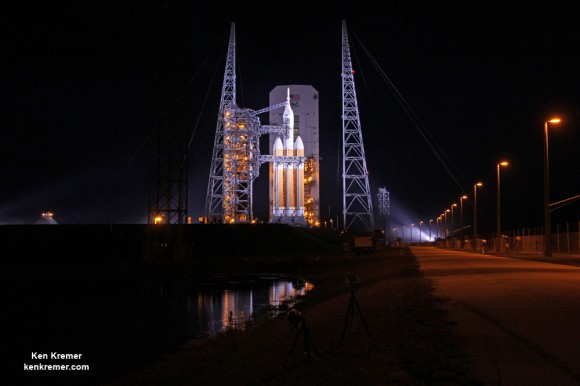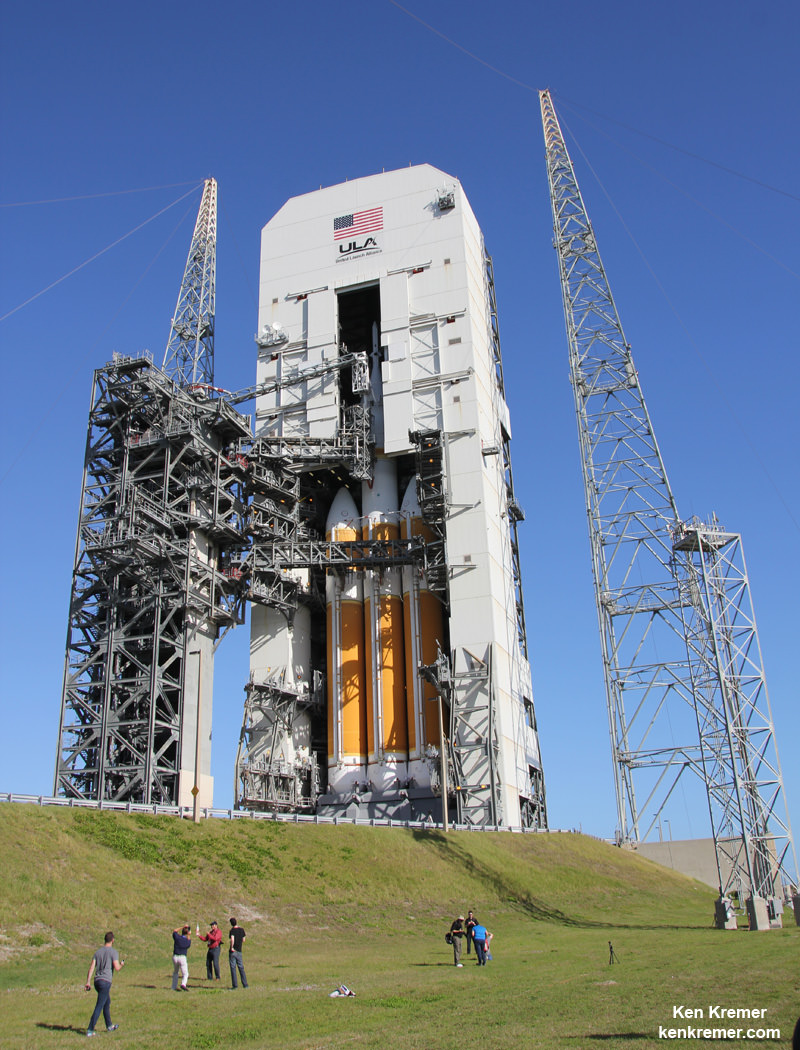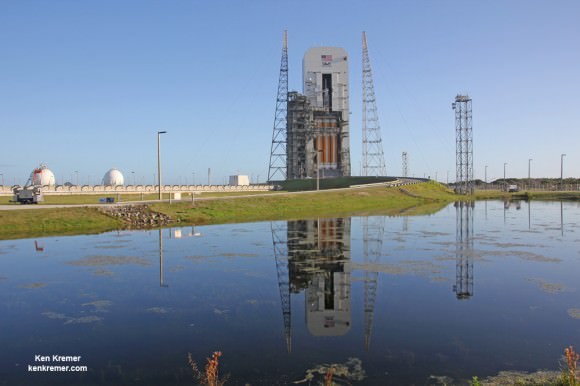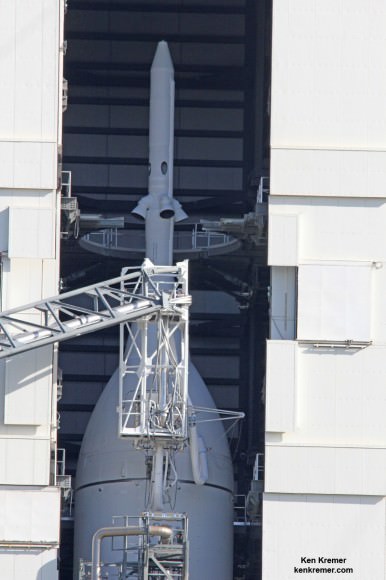SpaceX successfully launched their commercial Falcon 9 rocket and Dragon cargo ship on a critical mission for NASA bound for the space station this morning, Jan. 10, while simultaneously accomplishing a hard landing of the boosters first stage on an ocean-floating “drone ship” platform in a very good first step towards the bold company goal of recovery and re-usability in the future.
The spectacular night time launch of the private SpaceX Falcon 9 rocket lit up the skies all around the Florida Space Coast and beyond following a flawless on time liftoff at 4:47 a.m. EST from Cape Canaveral Air Force Station.
The nine Merlin 1D engines of the 208 foot-tall Falcon 9 generated 1.3 million pounds of liftoff thrust as the rocket climbed to orbit on the first SpaceX launch of 2015.
The Dragon CRS-5 mission is on its way to a Monday-morning rendezvous with the International Space Station (ISS).
It is loaded with more than two tons of supplies and NASA science investigations for the six person crew aboard the massive orbiting outpost.
A secondary goal of SpaceX was to conduct a history-making attempt at recovering the 14 story tall Falcon 9 first stage via a precision landing on an ocean-going landing platform known as the “autonomous spaceport drone ship.”
SpaceX CEO Elon Musk quickly tweeted that good progress was made, and as expected, more work needs to be done.
This was an experiment involving re-lighting one of the first stage Merlin engines three times to act as a retro rocket to slow the stages descent and aim for the drone ship.
“Rocket made it to drone spaceport ship, but landed hard. Close, but no cigar this time. Bodes well for the future tho,” Musk tweeted soon after the launch and recovery attempt.
“Ship itself is fine. Some of the support equipment on the deck will need to be replaced…”
“Didn’t get good landing/impact video. Pitch dark and foggy. Will piece it together from telemetry and … actual pieces.”
Musk’s daring vision is to recover, refurbish and reuse the first stage and dramatically reduce the high cost of access to space, by introducing airline like operational concepts.
The ‘autonomous spaceport drone ship’ was positioned some 200 to 250 miles offshore of the launch site in the Atlantic Ocean along the rockets flight path, flying along the US Northeast coast to match that of the ISS.
The autonomous spaceport drone ship measure only 300 by 100 feet, with wings that extend its width to 170 feet. That’s tiny compared to the Atlantic Ocean.
Therefore the SpaceX team was successful in accomplishing a rocket assisted descent and pinpoint landing in the middle of a vast ocean, albeit not as slow as hoped.
No one has ever tried such a landing attempt before in the ocean says SpaceX. The company has conducted numerous successful soft landing tests on land. And several soft touchdowns on the ocean’s surface. But never before on a barge in the ocean.
So they will learn and move forward to the next experimental landing.
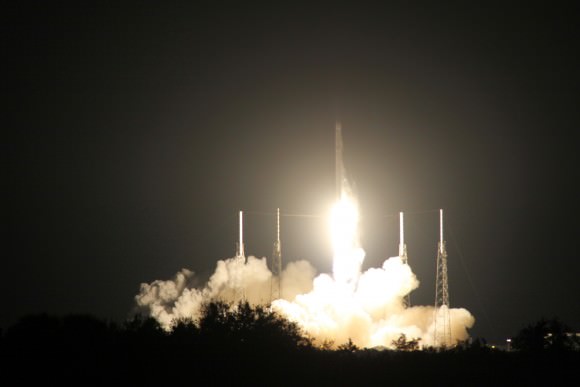
CRS-5 marks the company’s fifth resupply mission to the ISS under a $1.6 Billion contract with NASA to deliver 20,000 kg (44,000 pounds) of cargo to the station during a dozen Dragon cargo spacecraft flights through 2016 under NASA’s Commercial Resupply Services (CRS) contract.
“We are delighted to kick off 2015 with our first commercial cargo launch of the year,” said NASA Administrator Charles Bolden in a statement.
“Thanks to our private sector partners, we’ve returned space station resupply launches to U.S. soil and are poised to do the same with the transport of our astronauts in the very near future.”
“Today’s launch not only resupplies the station, but also delivers important science experiments and increases the station’s unique capabilities as a platform for Earth science with delivery of the Cloud-Aerosol Transport System, or CATS instrument. I congratulate the SpaceX and NASA teams who have made today’s success possible. We look forward to extending our efforts in commercial space to include commercial crew by 2017 and to more significant milestones this year on our journey to Mars.”
The Dragon CRS-5 spacecraft is loaded with over 5108 pounds (2317 kg) of scientific experiments, technology demonstrations, crew supplies, spare parts, food, water, clothing, and assorted research gear for the six person crew serving aboard the ISS.
The launch marked the first US commercial resupply launch since the catastrophic destruction of an Orbital Sciences Antares rocket and Cygnus Orb-3 spacecraft bound for the ISS exploded unexpectedly after launch from NASA Wallops, VA, on Oct. 28, 2014.
The US supply train to the ISS is now wholly dependent on SpaceX until Cygnus flights are resumed hopefully by late 2015 on an alternate rocket, the Atlas V.
Stay tuned here for Ken’s continuing Earth and planetary science and human spaceflight news.

